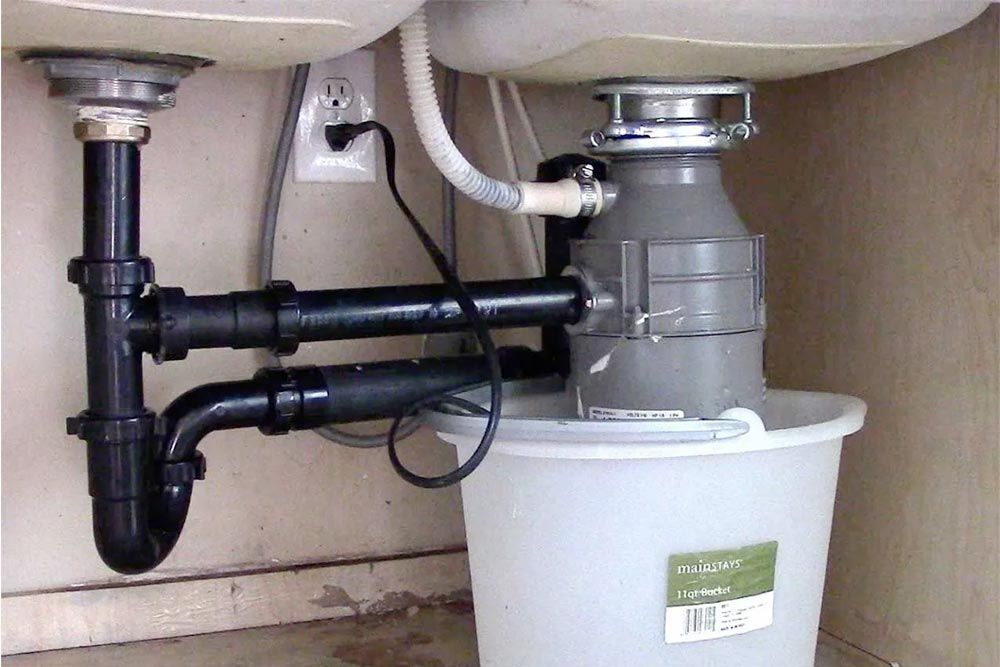A garbage disposal is one of the most convenient appliances in a modern kitchen—until it stops working. Whether it’s a sudden jam, strange noises, or complete silence when you flip the switch, a malfunctioning garbage disposal can quickly disrupt your daily routine. The good news? Most garbage disposal issues are quite common and can often be resolved without the need for a full replacement.
Understanding the root of the problem is the first step toward fixing it. In this article, we’ll explore the most frequent garbage disposal problems and offer practical repair solutions that can get your appliance back in working order. To get more details, visit here https://plumber-new-haven.com/garbage-disposal-repair/.
:max_bytes(150000):strip_icc()/leaking-garbage-disposal-2718868-hero-4da643e1102d4368b91a18864ef5778c.jpg)
The Garbage Disposal Won’t Turn On
One of the most common and alarming problems is when the garbage disposal doesn’t respond at all—no noise, no hum, just silence. This typically indicates an electrical issue rather than a mechanical one.
Start by checking if the unit is plugged in. It may sound obvious, but loose or disconnected plugs are more common than you might think. If the unit is plugged in and still unresponsive, locate the red reset button on the bottom or side of the unit. Press it and try to turn the disposal on again. If that doesn’t work, check your kitchen’s circuit breaker box to see if the breaker has tripped.
If none of these steps restore power, there may be a more serious electrical issue that requires a licensed technician’s help.
It Hums But Doesn’t Grind
If you hear a humming noise when you flip the switch, but the disposal isn’t grinding food waste, the problem is usually a jammed impeller or flywheel. This happens when food debris or a foreign object gets stuck inside the chamber, preventing the blades from turning.
First, make sure the disposal is turned off and unplugged. Never try to reach inside while it’s connected to power. Use a flashlight to inspect the chamber for any visible blockage. You can try using tongs or pliers to carefully remove any lodged object.
Most units come with an Allen wrench that fits into a socket on the bottom of the unit. Insert the wrench and manually rotate the flywheel to dislodge the jam. Once the obstruction is cleared, press the reset button and test the unit again.
Unusual Noises While Running
Loud grinding, rattling, or metal-on-metal sounds can indicate that something other than food is inside the disposal. Common culprits include silverware, bottle caps, or small bones. These items can cause damage if left unaddressed.
Turn off the disposal and use a flashlight to look inside. Carefully retrieve any foreign objects with pliers or tongs. Once removed, run water and turn the disposal back on to check if the noise has stopped.
If the noise persists and you’re certain nothing is inside, there could be a problem with the motor bearings or internal components, which might require professional repair or replacement.
Water Leaks Under the Sink
A leak under the sink near the garbage disposal can stem from several places. It could be coming from the sink flange, the dishwasher connection, or the discharge drainpipe. Each of these areas requires a different fix.
If the leak is coming from the top, the sink flange may need to be resealed with plumber’s putty. If it’s leaking from the hose connecting to the dishwasher, tightening the clamp or replacing the hose may solve the issue. A leak at the bottom of the disposal, however, often signals internal damage and may mean it’s time to replace the unit.
Carefully identify the source of the leak before deciding whether to repair or replace the disposal.

Slow Draining or Standing Water
If water drains slowly or backs up into the sink, the problem might not be with the disposal itself but with the connected drain pipes. Food buildup, grease, and debris can clog the lines and create drainage issues.
Try flushing the drain with hot water and dish soap. For stubborn clogs, a natural mixture of baking soda and vinegar can help break down buildup. Avoid chemical drain cleaners, as they can damage the disposal and pipes. If the problem persists, the pipes may need to be disassembled and cleaned out manually.
When to Call a Professional
While many garbage disposal problems can be handled with DIY solutions, there are times when it’s best to call in a professional. If you’ve tried all the basic troubleshooting steps and the disposal still isn’t working, or if you notice strange odors, smoke, or electrical sparks, it’s time to contact a licensed repair technician. Attempting to fix electrical or internal mechanical problems without the proper training can be dangerous and could cause further damage.
Final Thoughts
A garbage disposal that isn’t working properly can be a major inconvenience, but the problem is often easier to fix than it seems. Whether it’s a simple jam, a loose connection, or a minor clog, understanding the most common issues can help you troubleshoot confidently and avoid costly repairs. By knowing when to DIY and when to call for help, you can keep your kitchen running smoothly and extend the life of your garbage disposal.




.jpg)
Comments